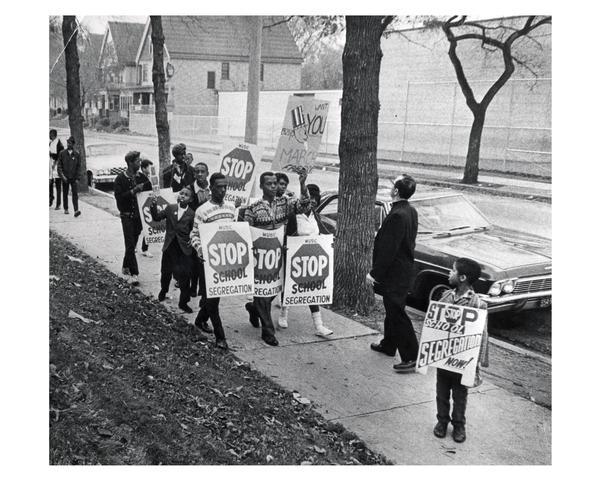Harry Potter's Third Film: Exploring The Directorial Shift

Table of Contents
A Change in Tone: From Lighthearted to Darker and More Mature
Chris Columbus's direction of the first two Harry Potter films established a lighter, more family-friendly tone, perfectly capturing the whimsical early adventures of the young wizard. However, Harry Potter and the Prisoner of Azkaban demanded a more mature approach. Cuarón injected a darker, more atmospheric mood, reflecting the book's increasingly complex themes. This shift wasn't simply about adding darker scenes; it was about exploring deeper emotional struggles faced by Harry, Ron, and Hermione. The film delves into more mature themes, including loss, betrayal, and the complexities of adolescence, transforming the coming-of-age narrative into a psychological thriller.
- Increased focus on psychological tension and suspense. The film expertly builds suspense, leaving the audience constantly anticipating the arrival of Sirius Black.
- More emphasis on character development and emotional depth. We see the characters grapple with personal challenges and emotional turmoil, leading to more nuanced portrayals.
- Shift towards a more mature and nuanced portrayal of the wizarding world. The magical world is no longer solely a place of wonder; it now encompasses shadows and secrets.
Cuarón's Unique Visual Style and Cinematography
Cuarón's distinct visual style is immediately apparent. His innovative camera work and unique color palette set Prisoner of Azkaban apart from its predecessors. The use of handheld camera shots creates a sense of immediacy and unease, drawing the viewer into the characters' experiences. Strategic camera angles heighten suspense and emotion, emphasizing the psychological tension of the narrative. The film's depiction of magic is more naturalistic, less overtly fantastical than in the previous films, enhancing the film's realism.
- Implementation of innovative visual effects, seamlessly blending with practical effects to create a believable magical world. The dementors, for example, are chillingly effective.
- Intentional use of shadows and low-light scenes to enhance the film's mysterious atmosphere. This contributes significantly to the overall feeling of dread and unease.
- A more realistic portrayal of Hogwarts, showcasing the grandeur and realism of the castle, grounding the fantasy in a tangible setting.
The Impact of Magical Realism on Storytelling
Cuarón's incorporation of magical realism elements significantly enhances the film's emotional impact. He uses cinematic techniques, visual metaphors, and symbolism to enrich the narrative structure, moving beyond simple visual effects to create a deeper layer of meaning. The stylistic choices are crucial in shaping the audience's understanding and engagement with the story.
- Examples of visual metaphors and symbolism include the Marauder's Map and the imagery associated with the dementors.
- These techniques enhance the overall storytelling experience, adding layers of meaning and depth that resonate long after the credits roll.
- Cuarón's approach created a richer and more immersive cinematic experience, elevating the film beyond a simple children's story.
The Lasting Legacy of Cuarón's Direction on the Series
Cuarón's direction of Harry Potter and the Prisoner of Azkaban set a new standard for the series. His work profoundly influenced subsequent films, impacting the franchise's overall tone and visual style. The critical acclaim and fan reception solidified its place as a fan favorite and a high point in the Harry Potter film adaptations. His contribution to the overall success of the Harry Potter film series is undeniable.
- Comparison of Cuarón's style to that of subsequent directors reveals a clear influence on their approaches.
- His influence is evident in later films through the increased use of darker themes and more sophisticated visual storytelling techniques.
- The enduring popularity of "Prisoner of Azkaban" serves as a testament to the effectiveness of Cuarón's unique vision.
Conclusion
The directorial shift from Chris Columbus to Alfonso Cuarón in Harry Potter and the Prisoner of Azkaban proved to be a pivotal moment in the franchise. Cuarón's darker tone, innovative visual style, and masterful use of magical realism elevated the film, setting a new benchmark for the series and cementing its place as a fan favorite. His contributions significantly impacted subsequent films, demonstrating the profound and lasting impact of a skilled director's vision. Exploring the directorial choices and stylistic nuances behind Harry Potter and the Prisoner of Azkaban allows for a deeper appreciation of this crucial turning point in the magical world. So, revisit Harry Potter and the Prisoner of Azkaban and appreciate the unique directorial shift that redefined the series!

Featured Posts
-
 School Desegregation Order Ended Analysis And Future Outlook
May 02, 2025
School Desegregation Order Ended Analysis And Future Outlook
May 02, 2025 -
 Avrupa Daki Ortakliklarimiz Is Birliginin Gelecegi
May 02, 2025
Avrupa Daki Ortakliklarimiz Is Birliginin Gelecegi
May 02, 2025 -
 Cubs Fans Scary Fall From Outfield Wall Hospitalized After Game Incident
May 02, 2025
Cubs Fans Scary Fall From Outfield Wall Hospitalized After Game Incident
May 02, 2025 -
 Pancake Day Origins Customs And The Meaning Of Shrove Tuesday
May 02, 2025
Pancake Day Origins Customs And The Meaning Of Shrove Tuesday
May 02, 2025 -
 Xrps Journey From 15 000 Growth To Potential Millionaire Maker A Deep Dive
May 02, 2025
Xrps Journey From 15 000 Growth To Potential Millionaire Maker A Deep Dive
May 02, 2025
Latest Posts
-
 Smart Ring For Fidelity Hype Or Hope For Relationships
May 03, 2025
Smart Ring For Fidelity Hype Or Hope For Relationships
May 03, 2025 -
 Office365 Executive Inboxes Targeted In Multi Million Dollar Hack
May 03, 2025
Office365 Executive Inboxes Targeted In Multi Million Dollar Hack
May 03, 2025 -
 Could A Smart Ring Prove Infidelity Exploring The Technology
May 03, 2025
Could A Smart Ring Prove Infidelity Exploring The Technology
May 03, 2025 -
 Federal Agents Hacker Made Millions Targeting Executive Office365 Accounts
May 03, 2025
Federal Agents Hacker Made Millions Targeting Executive Office365 Accounts
May 03, 2025 -
 Smart Rings And Fidelity A New Era Of Relationship Trust
May 03, 2025
Smart Rings And Fidelity A New Era Of Relationship Trust
May 03, 2025
